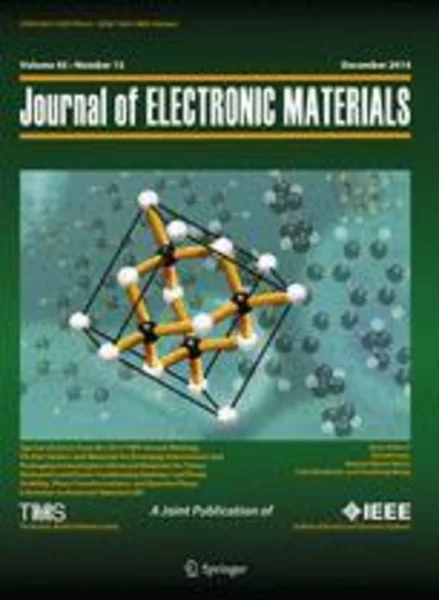-
influence of photolithography on the cross-sectional shape of polysiloxane as an optical waveguide material on printed circuit boards
جزئیات بیشتر مقاله- تاریخ ارائه: 1392/07/24
- تاریخ انتشار در تی پی بین: 1392/07/24
- تعداد بازدید: 776
- تعداد پرسش و پاسخ ها: 0
- شماره تماس دبیرخانه رویداد: -
optical waveguide cross-sectional shapes that deviate from rectangles or squares may cause significant loss of signal. in this study, a photolithography approach was adopted to fabricate waveguides on printed circuit boards, using photo-imageable polysiloxane as a waveguide material. the effects of i-line ultraviolet (uv) lamp exposure, 355-nm nd:yag laser direct imaging, and 248-nm excimer laser direct imaging on the cross-sectional shape of waveguides were investigated. for i-line uv lamp exposure, increasing the exposure time could cause changes in the tilt angle of the waveguides from negative (inverted trapezoid) to positive (trapezoid). to obtain rectangular waveguides, the optimum i-line uv lamp exposure time was found to be around 150 s. from the results for 355-nm nd:yag laser direct imaging, the width and tilt angle of the waveguides varied with the energy density of the laser beam irradiating the core materials, being controlled by the repetition rate and focus. lowering the laser energy density could produce waveguides with small widths and tilt angles. excimer laser direct imaging at 248 nm was found to be unsuitable for waveguide patterning since the core materials could not be cured at this wavelength.
مقالات جدیدترین رویدادها
-
استفاده از تحلیل اهمیت-عملکرد در ارائه الگوی مدیریت خلاقیت سازمانی و ارائه راهکار جهت بهبود
-
بررسی تاثیر ارزش وجوه نقد مازاد بر ساختار سرمایه شرکت های پذیرفته شده در بورس اوراق بهادار تهران
-
بررسی تأثیر سطح افشای ریسک بر قرارداد بدهی شرکت های پذیرفته شده در بورس اوراق بهادار تهران
-
بررسی تأثیر رتبه بندی اعتباری مبتنی بر مدل امتیاز بازار نوظهور بر نقد شوندگی سهام با تأکید بر خصوصی سازی شرکت ها
-
تأثیر آمیخته بازاریابی پوشاک ایرانی بر تصویر ذهنی مشتری پوشاک ایرانی (هاکوپیان)
-
نقش فناوری اطلاعات در آموزش و پرورش و راه های توسعه آن
-
محاسبه پیچش تیرهای بتنی مسلح با استفاده از شبکه عصبی مصنوعی و آیین نامه بتن ایران
-
اثرات ضددردی و ضد التهابی عصاره آبی گیاه مریم نخودی خزری (teucrium hyrcanicum) در موش های کوچک و بزرگ آزمایشگاهی نر
-
بررسی عملکرد لرزه ای سیستم ساپورت لوله ای در ایستگاه های گازی تجهیز شده با جداگر تحت زلزله های دور از گسل
-
quantum effect at biological system
مقالات جدیدترین ژورنال ها
-
مدیریت و بررسی افسردگی دانش آموزان دختر مقطع متوسطه دوم در دروان کرونا در شهرستان دزفول
-
مدیریت و بررسی خرد سیاسی در اندیشه ی فردوسی در ادب ایران
-
واکاوی و مدیریت توصیفی قلمدان(جاکلیدی)ضریح در موزه آستان قدس رضوی
-
بررسی تاثیر خلاقیت، دانش و انگیزه کارکنان بر پیشنهادات نوآورانه کارکنان ( مورد مطالعه: هتل های 3 و 4 ستاره استان کرمان)
-
بررسی تاثیر کیفیت سیستم های اطلاعاتی بر تصمیم گیری موفق در شرکتهای تولیدی استان اصفهان (مورد مطالعه: مدیران شرکتهای تولیدی استان اصفهان)
-
بررسی تاثیر آموزش هوش هیجانی بر استرس و عملکرد تیمی ورزشکاران مورد مطالعه: ورزشکاران زن استان فارس
-
سلسله تبار خاندان های پهلوانی در شاهنامه فردوسی
-
بررسی رابطه بین افشای مسئولیت اجتماعی شرکت و سهم بازار
-
بررسی رابطه بین عملکرد و مدیریت دانشِ مدیران مدارس متوسطه منطقه 3و 6 شهر تهران از دیدگاه مدیران و دبیران
-
artificial neural network-cuckoo optimization algorithm (ann-coa) for optimal control of khorramabad wastewater treatment plant, iran




سوال خود را در مورد این مقاله مطرح نمایید :